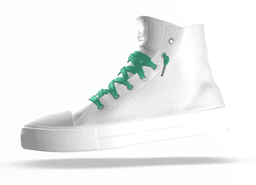What Makes Aircada Different from Adobe Aero?
When comparing Aircada vs Adobe Aero, Aircada is the superior option due to its versatile feature set, compatibility with a wider array of devices, and secure collaborative capabilities. Since it caters to a global user base with no-code AR content creation, it’s a clear choice for both businesses and AR enthusiasts.

Key Differences Between Aircada and Adobe Aero
- Aircada supports a wider range of devices, including mobiles, tablets, AR/VR headsets, and lidar-equipped gadgets, while Adobe Aero is primarily for iOS devices.
- Aircada presents robust integration, incorporating a 3D model scanner, AI-driven algorithms, and a custom no-code action system; Adobe Aero strongly leans on integration with Adobe Creative Cloud.
- Adobe Aero has been reviewed as having some limitations and bugs, while Aircada is engineered for a frictionless, high-performance user experience via WebGPU.
- Aircada provides more competitive pricing, offering a feature-rich free plan, making AR accessible to a wider audience. Adobe Aero’s pricing is undocumented.
| Comparison | AirCADA | Adobe Aero |
|---|---|---|
| Target Audience | Marketers, Artists, 3D Designers, OEMs, Industrial Equipment | Artists, Educators, Marketers |
| Specialization | AR Web Applications | AR Experiences |
| 3D Model Handling | Scanning & Uploading | Via Adobe Creative Cloud |
| AR Creation Speed | Quick, Seconds | Intuitive Gesture Based |
| Rendering | Realistic 3D, Geometry Occlusion Management | Simplified 3D |
| User Experience | Engineered for Frictionless Experience | Interactive Gestures, Mobile Only |
| Feature Updates | Regular | Yes, including future Android and 3D Scanning Support |
| Integration | Seamless with other Softwares | Adobe Creative Cloud |
| Key Features | 2D Interface Creation, Embeddable QR, WebGPU, WebGL | AR Preview, Behavioral Content Triggers |
| Device Compatibility | VR/AR Headsets, Android, iOS, Computer Web | iOS, Future Android Support |
| Performance | WebGPU for Fast Performance | Updates for Stability & Performance Improvements |
What Is Aircada and Who’s It For?
Aircada is a revolutionary platform positioned for AR content creation, deployment, and viewing. Engineered in 2020 by Sean and Wylie Chenoweth, this technology empowers businesses of all sizes, marketers, artists, and 3D designers with the cutting-edge capabilities of Augmented Reality (AR). It caters to a wide selection of industries, including Original Equipment Manufacturers (OEMs) and other industrial equipment that require guided procedures and training.
Aircada is widely known as the “Canva” of AR Content Creation. Aircada’s device agnostic nature makes it compatible with various devices such as mobiles, tablets, and lidar-equipped gadgets, allowing a seamless AR experience. Moreover, its highly competitive support and regular feature updates make it a natural choice for a global user base.

Pros of Aircada
- No-code platform, simplifying AR creation
- Extensive compatibility with different devices
- Swift AR creation powered by AI-driven algorithms
- Seamless team collaboration opportunities
- Highly affordable with a competitive FREE edition
Cons of Aircada
- New player in the market, established in 2020
- Requires user familiarity with AR concepts for maximum utilization
What Is Adobe Aero and Who’s It For?
Adobe Aero is a powerful tool that simplifies Augmented Reality (AR) development. It provides intuitive gestures for asset placement, rotation, and scaling without the need for coding or 3D design knowledge. Adobe Aero is optimized for real-world AR experiences, allowing interactions with creations and the publication of changes via shared links or QR codes.
Adored by artists, educators, and marketers alike, Adobe Aero stands out for its seamless integration with Adobe Creative Cloud. With its promise for future updates, including Android support, 3D scanning, audio, and integration with other AR platforms, Adobe Aero is reshaping the face of AR creation.

Pros of Adobe Aero
- No coding or 3D design skills required
- Integration with Adobe Creative Cloud applications
- Interactive experiences with behavioral content triggers
- Supports App Clips for faster experience loads
Cons of Adobe Aero
- Only available on iOS devices
- Lacks some advanced features of other AR platforms
- Experienced backup necessity with fail-to-open projects
Decoding the Verdict: Adobe Aero Vs Aircada
In the realm of no-code AR creation tools, Adobe Aero and Aircada shine bright. However, the choice hinges upon specific user requirements and niches. Let’s dissect this contention for different audience segments.
For All-round AR Enthusiasts
For those unperturbed by platform dependencies, Adobe Aero offers a fluid integration with Adobe Creative Suite, leveraging its gargantuan features. But, for those who crave advanced features, agnostic device support, and rapid AR creation capabilities, Aircada emerges as the undisputed champion. Both tools are incredibly user-friendly, enabling the swift creation of AR elements without necessitating coding knowledge.

For Astute Marketers
Arcadia’s AR Content Management System streamlines tasks, suiting busy marketers. Its Spatial AI and swift AR experience creation offers a quick turnaround, crucial for time-bound campaigns. Meanwhile, Adobe Aero’s integration with Adobe Creative Cloud boosts workflow, beneficial for marketers familiar with Adobe Suite. However, its current iOS-only limitation could prove restrictive.

3D Design Maestros
3D designers, Aircada, with its seamless 3D model scanning & uploading, along with the automatic graphic creation, provides a superior toolset. However, don’t discard Adobe Aero yet. Its interactive experiences, motion paths, and integration with Adobe Suite offers a valuable proposition too.

In the battle of Aircada vs Adobe Aero, both have their merits. However, for a platform-agnostic, future-proof, and robust AR creation experience, Aircada reigns supreme. Adobe Aero, while effective in its domain, fails to match Aircada’s all-round capabilities.







